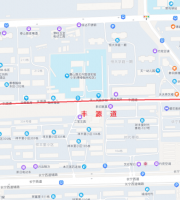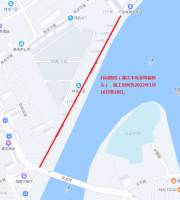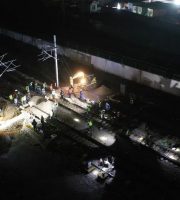4.
Process flow: base course treatment → brushing cold primer oil → additional layer construction → large surface construction of coiled material → protective layer construction 3.
An additional layer shall be set at the internal and external corners, construction joints and post cast strip of the additional layer of SBS coil.
For base course treatment, cut off the split screw and fill the split screw with cement mortar; The plane and facade joints, turning points, internal and external corners, etc.
If it is necessary to connect with the plane waterproof layer, protective measures shall be taken, and the joints shall be reserved at the intersection.
Scope of application: Construction of SBS modified asphalt waterproof coiled material for basement side wall.
shall be made into uniform, flat and smooth rounded corners, and the arc radius shall not be less than 50mm; Deal with defective parts and construction joints of concrete; Where the closure of the vertical wall is required, a flood tank shall be reserved: the position of the raft duck foot plate and the plane position of the independent column base shall be cleaned; The base course must be dry, clean and flat.
2.
Except for those limited by conditions, the external anti internal sticking shall be adopted, and the others shall be constructed with external anti external sticking; (2) .
The course covers the leakage detection technology of “tap water pipe, hot water pipe, drainage pipe (sewer), smoke exhaust pipe, air conditioning pipe and wire pipe” – from the basic knowledge of indoor pipe type, material, pressure resistance and pipe fitting connection, to the standard leakage detection process, equipment purchase suggestions, pressure suppression technology, and then to the leakage detector, thermal imaging, endoscope, fluorescence detection method The use technology of water leakage detection instruments and tools such as plugging tester, as well as a large number of experience in dealing with difficult problems on the water leakage detection site, are summarized in this tutorial· The course includes: “8 video courses + 1 paper book + more than 100 course supporting video materials”· In addition to video and paper books, we also provide 6-month technical guidance services.
Today, I recommend a book for masters who really want to learn waterproof technology: the second edition of indoor water pipe leakage detection technology, which is a real tutorial to systematically learn indoor water pipe leakage detection technology from scratch.
The joint with the base plate coil must be cleaned to ensure that the overlapping length is not less than 150mm.
for the part that needs to be closed on the facade, the closing height shall be 50 ~ 100cm higher than the outdoor ground.
The coiled material construction can be carried out only after it is dry.
After the pipeline installation is completed, it shall be blocked with flexible materials.
6.
Put the joint into the flood tank and fix it with reliable measures.
The additional layer is 500mm wide and 250mm on each side.
1、 Process flow 1.
7.
(long press the QR code identifying the picture below to buy) ——————-.
The facade of the protective layer coiled material waterproof protective layer adopts perforated brick to build 120 walls, and the basement with more than two floors is set with 240 walls every 4m × 240 brick columns; The raft, duck foot slab and other planes are protected by 50 thick C20 fine aggregate concrete, or 20 thick cement mortar can be paved and covered with a standard brick.
5.
The cold primer oil shall be applied evenly without leakage.
(3) The lap length of the long side and the short side of SBS coil shall not be less than 100mm, the lap range must be welded firmly, the interface shall overflow hot-melt asphalt, and the interface shall be sealed; (4) .
the waterproof treatment of the installation pipeline out of the shear wall shall be strengthened.
Large surface construction of SBS coiled material: (1) the side wall of the basement must be fully adhered, and the hot-melt method shall be adopted for construction.



